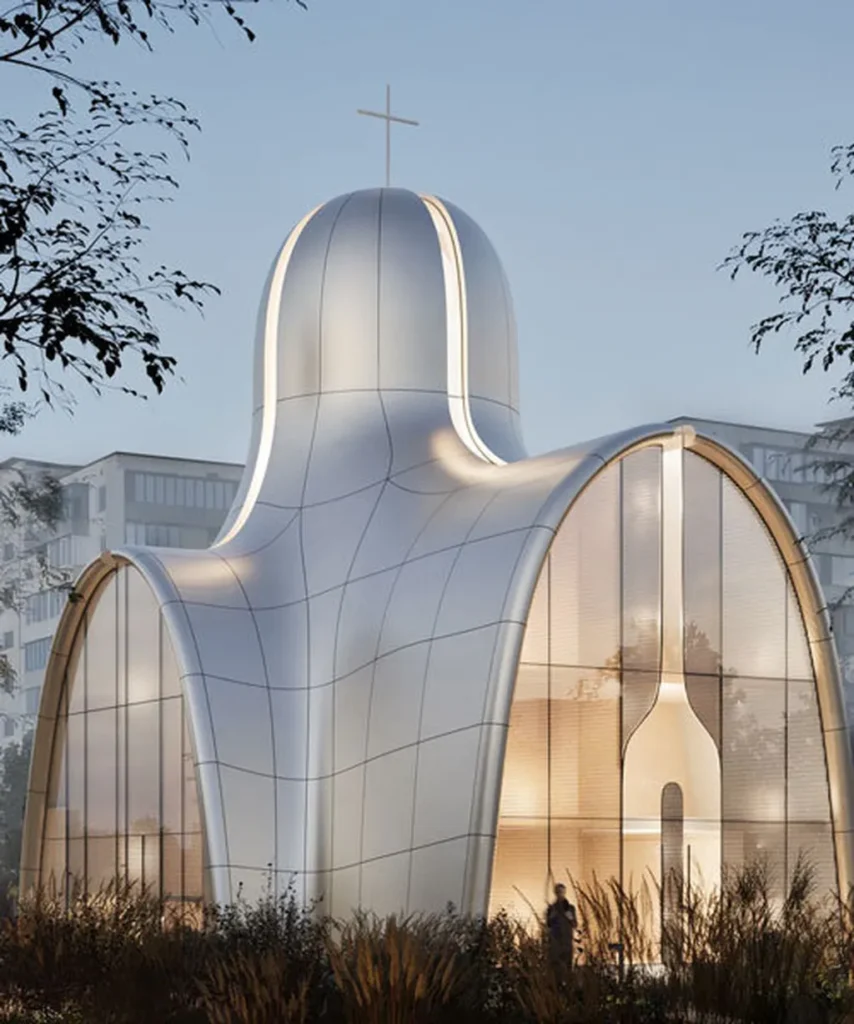In the heart of Ukraine, a groundbreaking study is reshaping the way we think about public building designs, particularly in the commercial sector. A. V. Radkevych, a researcher from the Ukrainian State University of Science and Technologies, SEI DIIT, has published a compelling analysis in the journal ‘Nauka ta progres transportu’ (which translates to ‘Science and Progress in Transport’) that could significantly impact the energy efficiency and aesthetic appeal of grocery and non-food stores.
Radkevych’s research focuses on the comparative analysis of load-bearing arch systems for public buildings, specifically those without internal supports. This trend is gaining traction as architects and engineers strive to create more open, inviting spaces for shoppers. The study zeroes in on a project in the Lviv region of Ukraine, featuring a grocery and non-food store with a span of 17.5 meters and a sweep angle of 90 degrees.
“The main goal was to determine the most efficient and manufacturable cross-section for the arch system under given conditions,” Radkevych explains. The study compared various types of arch cross-sections, including welded and rolled I-beam, welded rectangular pipe, and seamless round pipe. Using the finite element method based on the SCAD design and computing complex, Radkevych was able to identify the most rational constructive solution.
The findings are nothing short of revolutionary. The welded I-beam cross-section emerged as the most efficient and manufacturable option, outperforming its counterparts in terms of material usage and structural integrity. “All other types of cross-sections considered have a lower level of efficiency and manufacturability of manufacture,” Radkevych notes.
But the research doesn’t stop at identifying the best option. Radkevych also pinpointed the main “weak” points of the I-beam welded cross-section and provided recommendations for their elimination. This holistic approach ensures that the proposed design is not only efficient but also durable and safe.
The practical implications of this research are vast. The proposed structural solution of a small-span steel arch in the form of a welded I-beam is approximately 1.5 times less material-intensive than possible analogues. This means significant cost savings for developers and a reduced environmental footprint for the construction industry.
Moreover, the study’s findings could pave the way for future developments in the field. As Radkevych explains, “The nature of the distribution of the material efficiency coefficient for given construction conditions has also been obtained.” This insight could guide future research and development in the design and construction of public buildings, particularly in the commercial sector.
In an era where energy efficiency and sustainability are paramount, Radkevych’s research offers a promising solution. By optimizing the load-bearing arch systems of public buildings, we can create more spacious, aesthetically pleasing, and energy-efficient structures. This is not just a win for the construction industry; it’s a win for the environment and for consumers who stand to benefit from more inviting and sustainable shopping spaces.
As the world continues to grapple with the challenges of climate change and resource depletion, studies like Radkevych’s offer a beacon of hope. They remind us that with the right research and innovation, we can build a more sustainable future—one grocery store, one public building, one community at a time.

